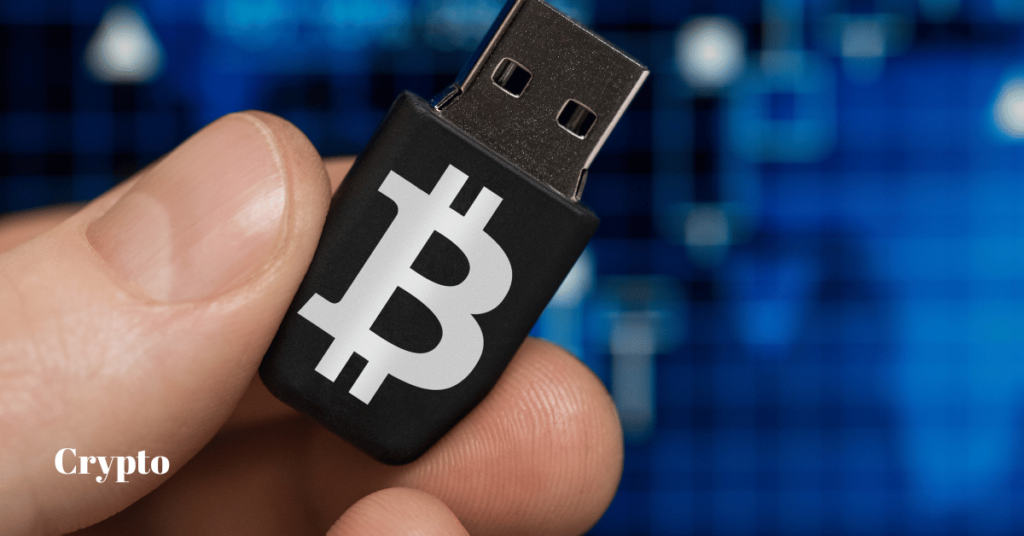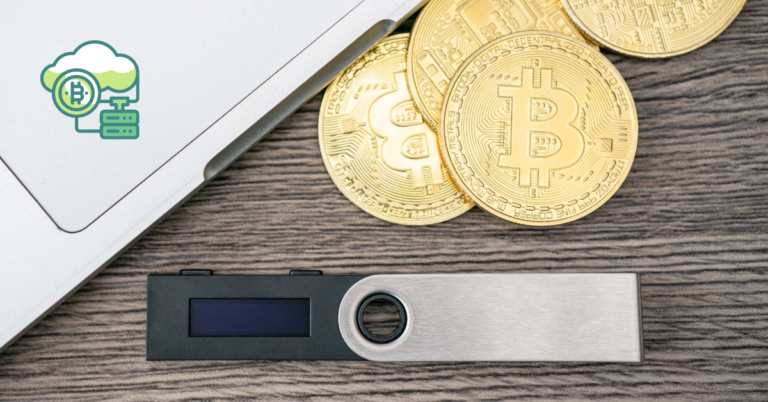Cryptocurrency is no longer a niche topic; it’s mainstream, and with that comes the critical responsibility of securely storing your digital assets.
In 2024, the landscape of cryptocurrency storage has evolved, offering a variety of options that cater to different needs and levels of security. Whether you’re a newbie or a seasoned investor, knowing how to store cryptocurrency safely is paramount.
What is a Cryptocurrency Wallet?
A cryptocurrency wallet is a tool that allows you to store, receive, and send digital currencies like Bitcoin or Ethereum. Unlike traditional wallets, which store physical currency, a cryptocurrency wallet stores your private keys—the secret codes that enable transactions and provide access to your digital currency. There are different types of wallets, each with its own strengths and weaknesses:
- Hot Wallets: These are connected to the internet, making them convenient for daily transactions but more vulnerable to hacks.
- Cold Wallets: These are offline, offering greater security for long-term storage.
- Paper Wallets: These are physical documents containing your keys and wallet addresses, providing a secure but less convenient storage method.
Storing Cryptocurrency in an Exchange

Storing your cryptocurrency on an exchange is often the most straightforward method for beginners. However, it comes with its own set of risks and precautions.
Researching and Choosing a Reliable Exchange
Before committing to an exchange, it’s crucial to do thorough research. Look for exchanges that have a strong reputation, support a wide range of cryptocurrencies, and offer robust security measures like two-factor authentication (2FA).
Account Setup and KYC Process
Once you’ve chosen an exchange, setting up an account is the next step. This usually involves providing your email, phone number, and personal identification documents for the Know Your Customer (KYC) process, which helps prevent fraud and money laundering.
Depositing Your Cryptocurrency
After setting up your account, you can deposit your cryptocurrency. This is usually done by generating a wallet address within the exchange, which you can then use to transfer your funds.
Best Cryptocurrency Exchanges for Storage
Choosing the right exchange can make all the difference in the security and accessibility of your funds. Here are some of the best options available:
- Kraken: Known for its robust security features and low fees, Kraken supports over 185 cryptocurrencies.
- Coinbase: A user-friendly exchange that supports over 200 cryptocurrencies, Coinbase is a popular choice for beginners.
- Crypto.com: With support for over 250 cryptocurrencies, Crypto.com also offers competitive transaction fees.
Storing Cryptocurrency in Cold Storage

Cold storage is considered one of the safest ways to store cryptocurrency. Here’s how to do it:
Selecting a Cold Storage Device
Cold storage devices, like the Trezor Model T or Ledger Nano X, are hardware wallets that keep your keys offline. These devices are typically small, portable, and secure.
Setting Up Your Cold Wallet
Setting up a cold wallet involves connecting the device to your computer and installing the corresponding software. You’ll also need to create a secure PIN and a recovery phrase.
Safeguarding Your Recovery Phrase
Your recovery phrase is crucial; it’s the only way to recover your funds if you forget your PIN or if your device is lost or damaged. Write it down and store it in a secure location.
Sending Cryptocurrency to Cold Storage
Once your wallet is set up, you can transfer your cryptocurrency from an exchange or another wallet to your cold storage device. Always double-check the wallet address before sending any funds.
Best Cold Storage Wallets
When it comes to cold storage, two wallets stand out:
- Trezor Model T: This device is highly secure, supports multiple cryptocurrencies, and even includes an incorporated exchange.
- Ledger Nano X: Another top choice, the Ledger Nano X offers Bluetooth connectivity and supports a wide range of cryptocurrencies.
Also read: Best Strategies to Make Money with Cryptocurrency
Storing Cryptocurrency in a Hot Wallet

Hot wallets are ideal for users who need quick access to their funds for trading or transactions.
Setting Up a Hot Wallet
Setting up a hot wallet typically involves downloading an app or software, creating an account, and completing the KYC process.
Completing KYC
Some hot wallets require KYC for full functionality, while others allow you to skip this step and complete it later.
Adding Cryptocurrencies
Once your wallet is set up, you may need to manually add the cryptocurrencies you wish to store. This is usually a simple process of selecting the crypto and clicking “add.”
Depositing Cryptocurrency
Finally, you can deposit your cryptocurrency by generating a wallet address and transferring your funds.
Best Hot Wallets
There are several reputable hot wallets available, each with its own unique features:
- Electrum: A free, highly secure wallet that supports Bitcoin and integrates with hardware wallets.
- Exodus: A versatile wallet that supports multiple cryptocurrencies and includes an incorporated exchange.
- Mycelium: Known for its advanced privacy features, Mycelium is a popular choice for more experienced users.
Storing Cryptocurrency in a Paper Wallet
Paper wallets offer a secure, offline method for storing cryptocurrency, but they require careful handling.
Setting Up a Secure Environment
To create a paper wallet, start by ensuring that your computer is free of malware. If possible, use a freshly installed operating system or a dedicated computer for this purpose.
Generating a Paper Wallet
There are several online tools available for generating paper wallets. These tools will create a pair of public and private keys, which you can then print out.
Printing and Storing Your Paper Wallet
Print your wallet on a secure, malware-free printer, and store it in a safe location. Consider laminating the paper to protect it from physical damage.
Sending Cryptocurrency to Your Paper Wallet
Once your paper wallet is ready, you can send cryptocurrency to it by transferring funds to the public address on the paper. Store the paper wallet securely, away from moisture, heat, and other potential hazards.
Pros and Cons of Different Wallet Types
Every wallet type has its advantages and disadvantages, depending on your needs.
Hot Wallets
Hot wallets offer convenience and quick access, making them ideal for frequent transactions. However, they are more vulnerable to online threats.
Cold Storage
Cold wallets provide excellent security by keeping your keys offline, but they can be less convenient for regular transactions.
Paper Wallets
Paper wallets offer a high level of security but are vulnerable to physical damage or loss. They are best used for long-term storage.
Understanding the Risks of Cryptocurrency Storage
While cryptocurrency storage methods have evolved, each comes with its own set of risks.
Risks of Storing on Exchanges
Exchanges are prime targets for hackers. Even the most secure exchanges have been breached, leading to significant losses for users.
Risks of Cold Storage Wallets
Cold storage wallets can be lost, stolen, or damaged, and if you lose your recovery phrase, your funds are unrecoverable.
Risks of Hot Wallets
Hot wallets are vulnerable to online attacks, including phishing scams, malware, and hacking.
Risks of Paper Wallets
Paper wallets can be damaged or destroyed, and if they fall into the wrong hands, your funds can be stolen.
Also read: How to Stake Cryptocurrencies
Factors to Consider When Choosing a Wallet
Choosing the right wallet depends on several factors, including security, cost, and user experience.
Security Features
Look for wallets with strong security features, such as 2FA, encryption, and secure recovery options.
Fees and Costs
Consider the fees associated with each wallet type, including transaction fees, withdrawal fees, and any costs for hardware wallets.
Supported Cryptocurrencies
Ensure that the wallet you choose supports all the cryptocurrencies you plan to store.
User Experience and Accessibility
Finally, consider the user experience. Some wallets are more user-friendly than others, and some offer better customer support.
How to Secure Your Cryptocurrency Wallet
Securing your wallet is crucial to protecting your digital assets.
Importance of Strong Passwords
Use strong, unique passwords for your wallets, and change them regularly to minimize the risk of unauthorized access.
Two-Factor Authentication (2FA)
Enable 2FA on your accounts whenever possible. This adds an extra layer of security by requiring a second form of authentication.
Regular Backups and Updates
Regularly back up your wallet and update the software to protect against potential vulnerabilities.
Keeping Your Recovery Phrase Safe
Your recovery phrase is your lifeline. Store it in a secure location and avoid sharing it with anyone.
Common Mistakes to Avoid
Many users make simple mistakes that can lead to significant losses.
Using Unreliable Exchanges
Always use reputable exchanges with strong security measures. Avoid using unknown or untrustworthy platforms.
Neglecting Backup Procedures
Failing to back up your wallet or recovery phrase can result in a complete loss of funds if something goes wrong.
Falling for Phishing Scams
Phishing scams are common in the crypto world. Always double-check URLs and avoid clicking on suspicious links.
Conclusion
Storing cryptocurrency securely requires careful consideration of the options available and a proactive approach to security. By following the guidelines outlined in this guide, you can protect your digital assets and ensure that they are safe for the long term.
So that’s it about this article. If you have any further questions, feel free to comment down below or contact finzerr.
Finzerr is always here to help you!
FAQs
How Do You Store Large Amounts of Cryptocurrency?
For large amounts, consider using a combination of cold storage and a trusted exchange for added security and accessibility.
Can You Store Cryptocurrency Offline?
Yes, you can store cryptocurrency offline using cold wallets like hardware wallets or paper wallets.
Are Cryptocurrency Exchanges Safe?
While many exchanges offer robust security features, they are still vulnerable to hacks and other security breaches.
Can You Store Multiple Cryptocurrencies in One Wallet?
Yes, many wallets support multiple cryptocurrencies, making it easier to manage your portfolio.
What Are the Different Types of Cryptocurrency Exchanges?
There are centralized exchanges (CEX) and decentralized exchanges (DEX). CEXs are more user-friendly, while DEXs offer more privacy and control.



